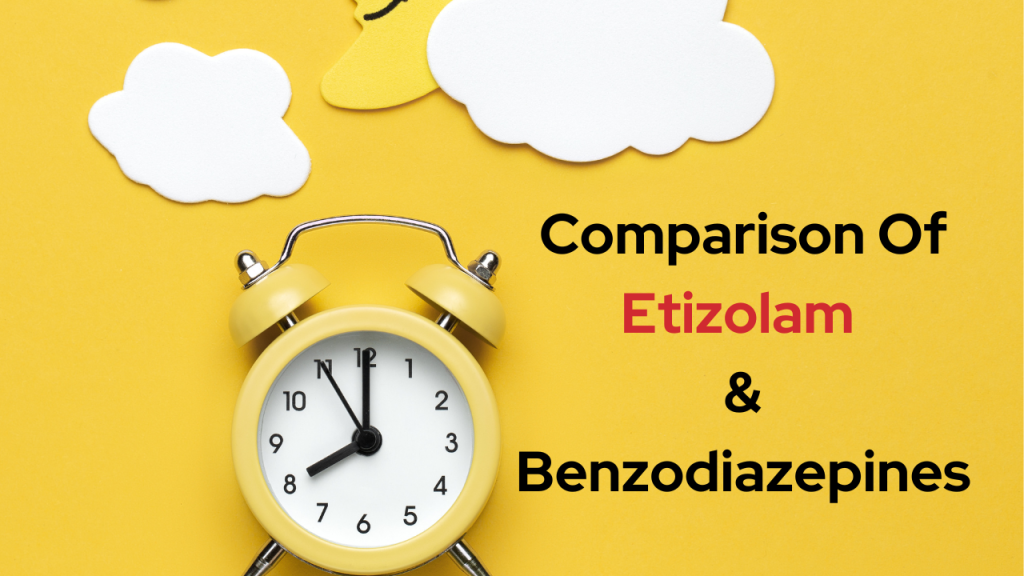Introduction
Mental health illnesses are among the most common health problems, with the CDC reporting that one out of five U.S Adults is living with the problem. Approximately 10.7% of the world suffers from mental health issues, of which Anxiety and Depression rank at the top. While anxiety chiefly impacts the body’s cognitive function, left untreated, it can result in many physical problems with performance deficits and affect economic and social stability.
Treatment options for anxiety and depressive tendencies are chiefly through medications to help you lead a normal life and therapy. Out of the wide range of drugs designed for anxiolytic functions, benzodiazepines are the most widely used because of their quick action and impact on many problems, including anxiety, insomnia, seizures, spastic disorders, and depressive tendencies.
Traditional benzodiazepines, though effective in dealing with symptoms, have been associated with abuse and increased tolerance when used for a longer term, along with the increased intensity of withdrawal symptoms when discontinued eventually. Additionally, traditional benzos lose effectiveness in severe anxiety conditions or when used for more extended periods. The need for second-generation modified benzodiazepines that are effective and safer than traditional benzos has resulted in the development of numerous modified benzos, out of which Etizolam is most talked about because of its unique molecular structure and stronger potency.
A word on Etizolam
Etizolam was introduced in 1983 in Japan as a treatment option for anxiety and sleep disorders. What makes it unique from other benzos is its availability in different forms and potency in treating chronic anxiety cases. While Etizolam is widely available in India, Japan, and Italy as a prescription medication, it is a Schedule-I medication in Europe and the United States and a Controlled Substance in those regions.
Several factors set Etizolam apart from other benzodiazepines. Here is a brief comparison between Etizolam and traditional benzodiazepines.
Etizolam vs Traditional Benzodiazepine
Structure
Traditional Benzodiazepines are a class of depressant drugs, the core structure of which consists of a benzene and a diazepine ring. They are designed in such a manner to work on the GABA-A receptors in the CNS responsible for inhibiting nerve function to reduce neuronal excitability.

Image Credit – https://en.wikipedia.org/wiki/Benzodiazepine
Etizolam is a thienodiazepine chemically related to benzodiazepines but differs in structure. Instead of a benzene ring is a thiophene ring fused with a triazole ring fused to the diazepine ring to make it a thienodiazepine compound. Like benzos, it binds to the GABA-A receptors but targets the alpha1 beta two and gamma 2S subunits, because of which its anxiety and sedative effects are visibly evident.

Image Credit – https://en.wikipedia.org/wiki/Etizolam
Strength
Etizolam is ten times stronger than traditional benzos like Alprazolam but still does not impact the motor abilities of the person, irrespective of its strength. In a study conducted on sixteen healthy volunteers, a single dose, double-blind dose of Etizolam 0.25 mg, Etizolam 1 mg, and Lorazepam was administered, and their psychomotor performance was assessed 30,60, 120, and 180 minutes after administering the medicine. The subjects went through tasks like Visual Vigilance Task, Choice Reaction Time, and Response Completion Tests to evaluate their psychomotor abilities adequately.
In either dose, Etizolam did not impact vigilance, short-term memory, psychomotor coordination, or speed of decision-making and only influenced arousal at the strength of 1 mg. In contrast, Lorazepam caused significant impairment of all psychomotor functions, including vigilance, short-term memory, psychomotor coordination, and decision-making skills. The study proved that Etizolam, when used for short-term periods at lower strengths, does not impact the ability to work or drive.
Impact on Generalized Anxiety Disorder
In a comparative study to evaluate the effects of Etizolam, Alprazolam, and Bromazepam, 45 subjects with generalized anxiety disorder were treated twice daily with 0.5 mg Etizolam, 0.5 mg Alprazolam and 3 mg Bromazepam and their anxiety and depression were assessed after two weeks. The treatment was extended for two weeks, and the dose was increased thrice daily for patients who showed a poor response in the first two weeks.
The study showed a similar graph on anxiolytic activity after two weeks of treatment. After that time, Etizolam displayed a progressive increase in anxiolytic activity. It also showed a marked antidepressant effect over Alprazolam and Bromzzepam without any differences in tolerability.
Impact on panic disorders associated with agoraphobia
Agoraphobia with panic disorder is a phobic-anxious syndrome where the subjects avoid situations or places in which they fear being embarrassed or being unable to escape getting panic attacks suddenly.
To evaluate the impact of Etizolam on panic disorders with agoraphobia, thirty-one patients suffering from panic disorders associated with agoraphobia received twice daily doses of 0.5 mg Etizolam over four weeks and in the results, exhibited significant improvement in chronic anxiety, episodic anxiety, and associated depressive symptoms.
In a different study, Alprazolam showed mixed effectiveness, further marred by many placebo subjects dropping out of the study.
Abuse and Dependence Potential
Animal studies on Etizolam showed that it inhibited the GABAA receptors in a concentration-dependent manner and showed an increased affinity than benzos like Alprazolam. Additionally, it produced a 73% increase in GABA-induced currents and a potency of 92 nmol/l. In contrast, Alprazolam( Xanax)showed a higher potentiation of 98% with a potency of 56 nmol/l.
Other studies showed that the Stress-induced enzyme TBPS was less in animal subjects administered Etizolam and showed reduced intrinsic activity. The sum total of pharmacokinetic properties and its significant efficacy in conditions of GABAergic deficit has demonstrated that Etizolam has a reduced liability to produce tolerance and dependence after long-term treatment of stress and anxiety.
Conclusion
The sum total of studies and evaluation of clinical trials has proved that Etizolam is a highly potent medication that can work on conditions of panic disorders and depressive symptoms without impacting the subjects working abilities or making them feel drowsy. Animal studies have further shown that it has less tolerance and addiction potential than other benzodiazepines. Despite its effectiveness, it is prone to misuse and spurious production for non-medical purposes, which has resulted in its negative publicity. Most importantly, it is a Schedule – 1 drug in the United States because of which it is not as widely available as other benzodiazepines. To get the best effect from Etizolam, you must use it for the short term strictly as per the physician’s advice. Further studies need to be conducted to evaluate its safety and tolerability.
References:
https://www.tandfonline.com/doi/abs/10.1080/10615800412336436
https://www.ncbi.nlm.nih.gov/books/NBK470159/
https://en.wikipedia.org/wiki/Benzodiazepine
https://go.drugbank.com/drugs/DB09166





